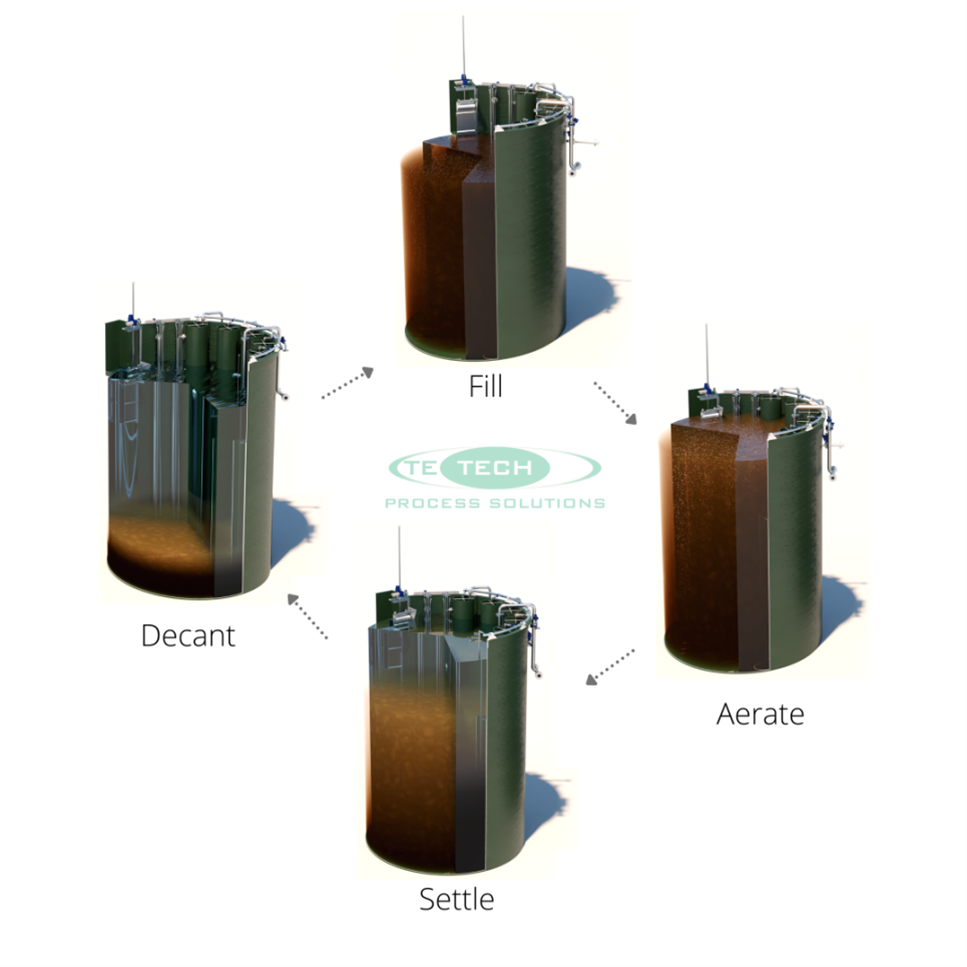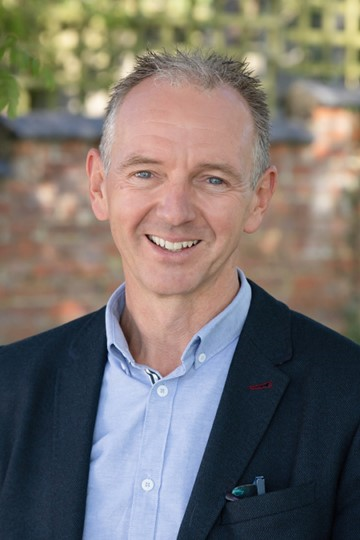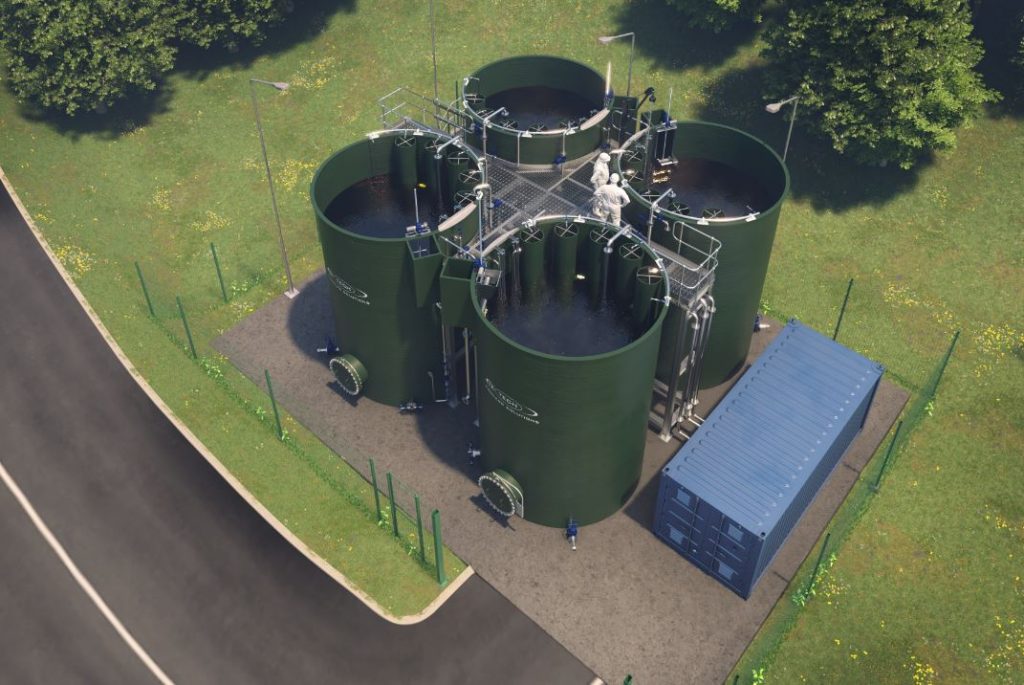As more and more consumers consider the products they buy and companies they invest in, manufacturing companies are increasingly being scrutinised for their ethics and the steps they are taking towards becoming net zero by 2030. In the water industry, this means not only reducing consumption to minimise impact on natural resources, but ensuring that any wastewater discharged will not harm the environment. Mike Froom, Business Development Director, Te-Tech Process Solutions explains further.
Beverage Industry Wastewater
The beverage industry is one of the largest consumers of water, typically using between 2 -5 litres of water to produce 1 litre of product and therefore, also creates 1 – 4 litres of wastewater per litre of product. Granted that some of this wastewater may be reclaimed and treated for use in clean-in-place (CIP) operations, but that’s still a lot of wastewater. Depending on the size of the operation, the wastewater generated may be discharged to sewer for treatment at a municipal sewage treatment works, partially treated on site to reduce the load prior to discharge to sewer or treated on site for discharge to a watercourse. The decision of which route to take is simply a matter of economics (the Mogden formula gives costs for sewer discharge in the UK) and the availability of a discharge licence from the Environment Agency.
Partial or full on-site biological treatment is usually economically attractive for all but the smallest facilities, and it can often be the first step towards recycling and re-use. There is a bewildering array of wastewater treatment processes available and it is difficult to know which to choose to remove the principle contaminants in wastewater generated from beverage production: biochemical oxygen demand (BOD), suspended solids and, depending on the type of beverage, nitrogen in the form of ammonia and/or nitrate.
Treatment Options
Biological processes work well provided that the wastewater is consistent in flow and composition, but problems can arise if there are changes, these occur frequently in batch or campaign operations such as brewing and soft drinks production. Over the years a cyclic process – the sequencing batch reactor (SBR) – has proven to be very flexible in dealing with variable wastewaters because the timings of the process stages are easily configurable to allow for variations such as changes in BOD and the requirement for nitrification and denitrification.
Cyclic Technology
The cyclic process, te-cyc™, is an enhanced SBR where treatment takes place in a single tank. It is configured with two or more batch tanks installed in parallel, with their sequences out of phase with each other, allowing for a continuous flow through the system without the absolute need for the upstream hydraulic buffer tank that most SBR systems require. This typically reduces the overall site footprint by approximately 50% compared with conventional continuous flow technologies.
The process includes an anaerobic selector zone and internal recycle which promotes the formation of so-called “macroflocs”. These settle rapidly and consist of an external aerobic zone and an internal zone that remains anoxic even during the aeration phase. This means that both nitrification and denitrification occur simultaneously if nitrogen removal is required, reducing both the required reactor volume and overall cycle time.

The process has three stages that operate, typically, on a four-hour repeating cycle. The stage times are adjustable to suit the flow and composition of the wastewater. First, water enters a single basin into the aerated zone via the anaerobic selector. Throughout this fill stage, the aeration zone is continually aerated at a controlled rate and a portion of the sludge is constantly recycled to the inlet of the selector. This is followed by the settling phase, when the inlet to the particular basin is closed, the internal recycle is stopped, and the sludge formed in the previous stage aggregates as a blanket and settles to the base of the reactor tank leaving a top layer of clear treated effluent. Finally, the clear supernatant (typically one third of the reactor volume) is removed by the decant arm, and a portion of the settled surplus sludge is discharged.
Trusted Technology
The technology was developed by the Austrian environmental engineering group SFC Umwelttechnik, who have over 600 reference plants around the world in both municipal and industrial applications. Now the technology is available in the UK via Southampton based, Te-Tech Process Solutions, SFC’s strategic partner. The process has been installed at two of Coca-Cola HBC’s eastern European plants, ensuring compliance of discharged wastewater with legal requirements and company specifications.
The technologyworks as a stand-alone aerobic treatment plant although it can be used to polish effluent from an upstream anaerobic process to meet environmental discharge standards. Plants using the te-cycTM process technology have been installed in this application at two distilleries in Scotland. Each treats around 1500m3/day of effluent from an anaerobic digestion system which recovers biogas as a fuel. The anaerobic digester effluent has a BOD 300mg/l and total nitrogen 70mg/l.
Smooth installation and operational transfer
The enhanced SBR technology has been developed into a range of modular packaged units. These are assembled and hydro-tested at works and Factory Acceptance Tests (FAT) are carried out prior to the plant being split down for transport to site. All that is required for construction is a prepared foundation to receive the plant which is re-assembled and bolted down ready for connection. The FAT is carried out with the real control elements on the plant rather than simulated injected signals, and that means that the plant is ready for commissioning. This reduces the overall site time for installation and commissioning, minimises exposure to risks associated with on-site installation activities and lessens programme impact of weather and other external factors. In most cases down-time due to change-over from existing plant to te-cycTM is minimal once break-ins have been made.
Scalability
For new-builds, the cyclic SBR technology offers a compact, flexible treatment solution for beverage manufacturers and as production increases, the plant can be easily uprated simply by adding more modules. The process helps to safeguard our environment by excellent BOD and suspended solids reduction together with nitrification and denitrification if required. It can also achieve low phosphorus levels with no need for chemical dosing. The future is cyclic.

About the Author: Mike Froom
Business Development Director
Mike has over 35 years experience in business development, contract and project management in the construction sector, with over 25 years dedicated to the water sector. Find out more about Mike and some more of the Te-Tech members Here
Contact Us for more information or to talk about your requirements enquiries@te-tech.co.uk
